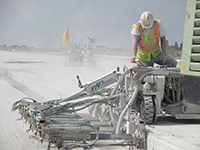 Installing ducts and showers in homes around the area, building additions to people’s homes, putting new toilets in, you’re probably not going to need a contractor’s bond. But, when you get those big-time jobs, the ones that make or break the business this year, when you start taking on new hires because you don’t have the manpower, when you’re doing swimming pools and whole new buildings, you’re gonna have to get bonded.
Installing ducts and showers in homes around the area, building additions to people’s homes, putting new toilets in, you’re probably not going to need a contractor’s bond. But, when you get those big-time jobs, the ones that make or break the business this year, when you start taking on new hires because you don’t have the manpower, when you’re doing swimming pools and whole new buildings, you’re gonna have to get bonded.
The Miller Act dictates that on any job budgeted at over $100,000, you’re going to have to supply a contractor’s bond. Now, this might not be your responsibility. If you’re sub-contracting for somebody else, you can let the head honcho who brought you onto the job worry about it. Otherwise, you need to get bonding in order to ensure that the job can be completed in a professional manner.
All of this being said, many clients may require bonded contractors on the job as a matter of preference. Getting bonded can make it easier to attain work for your firm even if you tend to focus on smaller and medium sized projects rather than six-figure constructions and installation.
Contract bonds are bonds that allow you to work on a particular job. Contract license bonds allow you to work in a certain area. You’ll need to check your local regulations to determine what you need in order to take a contract in addition to a contract bond. A bond differs from an insurance policy in that the firm signing the bond over to you is not covering the losses, damages or legal fees, rather, they are lending you the money to do so should something go wrong. You are expected to pay the surety back for any costs. It’s a line of credit rather than a form of insurance. Your insurance may wind up helping you to cover those costs, but any claims you make on your bond will eventually come out of your own pocket.
So what’s it going to cost you to get bonded? It’s really hard to guess. There are quite a few factors that weigh into the quote you’re going to get from a licensed surety bond provider. The good news is that the cost of getting bonded tends to correlate with the cost of the job. Making sure that your budget covers your own costs as well as the cost of getting bonded can help to ensure that you’re not scraping together your pennies to cover your end.














